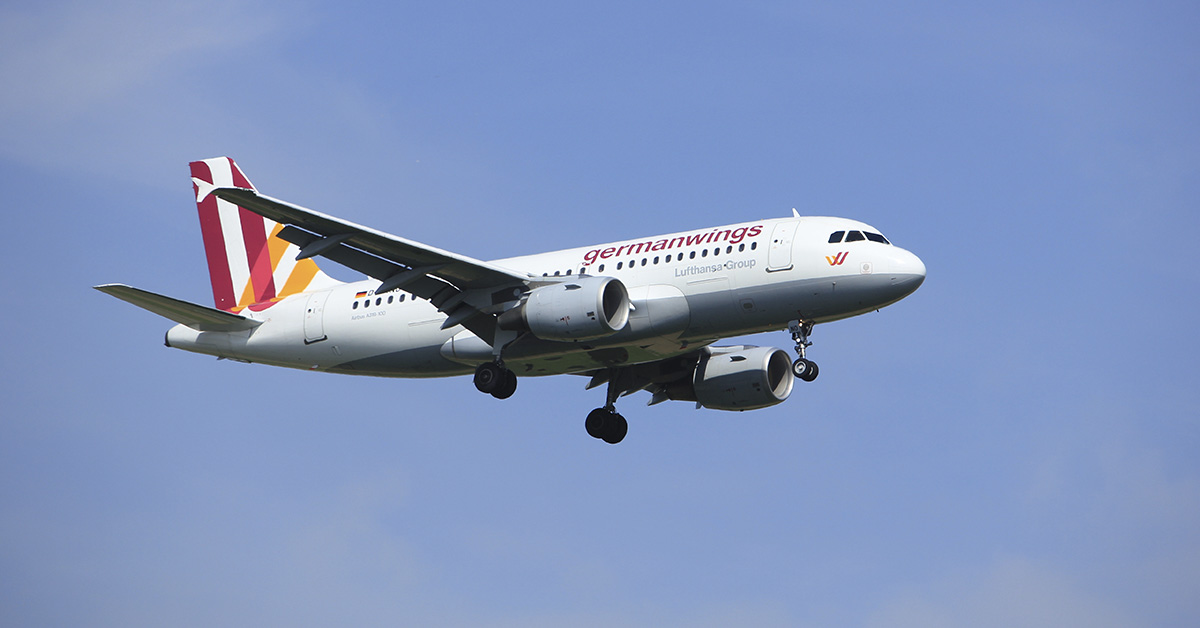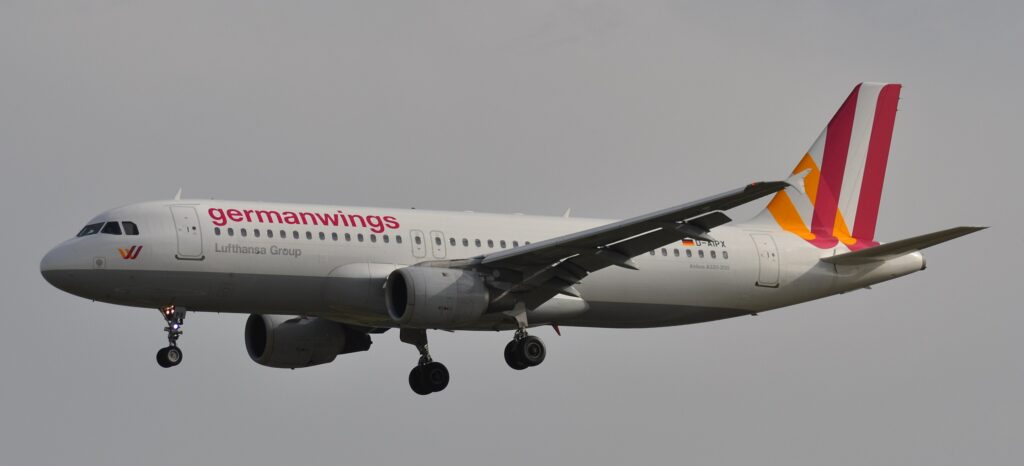
Germanwings Flight 9525 started out like any other routine trip from Barcelona to Düsseldorf on March 24, 2015. But within minutes of reaching cruising altitude, the flight turned into a horrifying and deliberate tragedy. The co-pilot, Andreas Lubitz, locked the captain out of the cockpit and intentionally crashed the Airbus A320 into the French Alps. All 150 people on board were killed. What investigators later discovered shocked the world and led to serious questions about mental health in aviation, cockpit security, and pilot monitoring.
The Chilling Final Words
The cockpit voice recorder recovered from the crash site revealed a disturbing chain of events. At cruising altitude, Lubitz asked Captain Patrick Sondenheimer to leave the cockpit, possibly using a bathroom break as an excuse. As soon as the captain exited, Lubitz manually set the autopilot to descend to 100 feet.
Soon after, the captain returned and found the door locked. Realizing something was wrong, he began pounding on the door and yelling, “Open the damn door!” The door didn’t budge. The flight crew and passengers became increasingly alarmed as the plane continued to descend.
Background noises from the recording included passengers screaming in the final seconds before the crash. Lubitz’s only audible sounds were his steady, calm breathing. He spoke no words, made no effort to explain or stop what was happening. Startlingly, he remained silent until the plane slammed into the mountain.
A Timeline of the Final Flight
The flight took off from Barcelona at 10:01 a.m. local time. By 10:27, it had reached its cruising altitude of 38,000 feet. At 10:30, Lubitz initiated the descent. Air traffic controllers tried to reach the cockpit but received no reply. Multiple attempts were made to contact the flight, but Lubitz never responded.

The plane began descending steadily at about 3,000 feet per minute. French fighter jets were scrambled, but they arrived too late. At 10:41 a.m., Germanwings Flight 9525 crashed into a remote area of the French Alps near Prads-Haute-Bléone.
Who Was Andreas Lubitz?
Lubitz, 27, had joined Germanwings in 2013. He held a valid medical certificate and had passed all the required physical and psychological evaluations. However, deeper investigation revealed a long and troubling history of mental illness.
He had taken a break from flight training in 2009 due to severe depression and suicidal thoughts. Multiple doctors had later deemed him unfit to work, including in the days leading up to the crash. But Lubitz hid this information from his employer. At his home, investigators found torn-up medical notes and prescriptions that would have grounded him.
A former girlfriend came forward after the Germanwings Flight 9525 crash, saying Lubitz had spoken about wanting to do something dramatic that would be remembered. She also recalled mood swings, paranoia, and dark thoughts. Lubitz had also conducted internet searches on cockpit door security and suicide methods days before the flight.
Lubitz’s Last Recorded Actions
According to the flight data and voice recordings, Lubitz waited until he was alone. Then, he made sure the cockpit door was locked and tamper-proof. He then lowered the autopilot altitude and didn’t respond to any calls from air traffic control.
He could hear the captain yelling and passengers panicking, but he remained silent. As the terrain warning alarms blared, he stayed calm. His breathing remained regular until impact, indicating he was fully conscious. There was no sign he tried to pull up or abort the descent.
Investigators said this was not an accident. It was deliberate, premeditated, and executed with full awareness.
The Immediate Aftermath
The Germanwings Flight 9525 crash site was in a remote mountainous region. Rescue workers faced harsh conditions as they searched for remains and recovered the black boxes. Families of the victims were flown to nearby towns and offered support and counseling.

German Chancellor Angela Merkel, French President François Hollande, and Spanish Prime Minister Mariano Rajoy visited the scene together. Their joint appearance underscored the tragedy’s international scale.
Lufthansa, Germanwings’ parent company, quickly grounded similar aircraft for inspection. A press conference was held within 24 hours, but when details about Lubitz’s actions emerged, the tone of the conversation shifted sharply. It was no longer a technical failure—it was mass murder.
Industry Reactions and Safety Changes
The crash triggered immediate changes in aviation rules. One of the first was the “two-person cockpit rule,” requiring two crew members to be present at all times in the cockpit. Several airlines implemented the rule within days.
European aviation authorities also pushed for stricter mental health screenings and better data sharing between medical professionals and airlines. Pilots were reminded to report mental health issues without fear of losing their jobs, although the balance between privacy and public safety remained controversial.
By 2017, some airlines, including Germanwings and Lufthansa, quietly dropped the two-person cockpit rule. They argued it didn’t improve safety significantly and introduced new risks, like inexperienced crew members being left alone in the cockpit.
Legal Consequences and Financial Settlements
Families of the victims of Germanwings Flight 9525 received compensation from Lufthansa and its insurers. However, many sued the airline, claiming it had failed to properly monitor Lubitz’s condition. German prosecutors launched an investigation into the doctors who had treated Lubitz, but no criminal charges were filed.

In 2017, a French court ruled that Lufthansa bore civil responsibility, not criminal. It ordered compensation to several families and urged the airline to revise its internal procedures. The total compensation cost Lufthansa over $300 million, covering insurance claims, lawsuits, and settlements.
The Role of Doctors and Confidentiality
One major issue highlighted by the crash was how mental health issues are handled within aviation. Lubitz had seen multiple doctors in the months before the crash. They noted symptoms such as insomnia, anxiety, vision problems, and suicidal thoughts.
Yet none of these doctors reported him to Germanwings or the aviation authority. German privacy laws protected Lubitz’s medical confidentiality. Doctors were not required to alert the airline unless there was a direct and imminent threat.
After the Germanwings Flight 9525 crash, Germany and other European countries revised these privacy laws, allowing doctors to notify authorities in extreme cases. Even so, many in the aviation industry say there’s still a long way to go.
Lubitz’s Family Disputes the Official Story
In a surprising move, Lubitz’s family publicly challenged the findings of the official investigation. They hired aviation journalist and researcher Tim van Beveren to conduct an independent review.
Van Beveren suggested that Lubitz may have been suffering from aerotoxic syndrome caused by exposure to toxic cabin air. He noted symptoms like blurred vision, confusion, and fatigue. He questioned whether the crash was intentional or the result of medical impairment.
However, authorities dismissed the theory, stating there was no evidence of technical failure or toxic exposure in the cockpit. Lubitz’s precise and methodical actions, they said, pointed clearly to an intentional act.
How the Public and Media Responded
News outlets around the world covered the crash extensively. As soon as reports of Lubitz’s actions surfaced, public opinion quickly turned from mourning to outrage. Headlines used words like “madman,” “mass killer,” and “suicidal pilot.”
Mental health advocates pushed back, warning that such language could further stigmatize people with depression. They stressed that the vast majority of individuals with mental illness are not violent.
The German Pilots’ Association criticized the media for making assumptions before the investigation concluded. But the intense focus on Lubitz’s mental state led to real policy changes and sparked important debates.
Remembering the Victims
The crash killed 150 people from 18 countries. Among them were 16 German high school students and two teachers returning from a Spanish exchange program. Their school created a permanent memorial garden and holds an annual day of remembrance.
Several memorials have been built, including one at the crash site in France and another in Düsseldorf. Names of the victims are inscribed in stone, along with messages of peace and remembrance.
On the tenth anniversary in March 2025, families gathered again to honor their loved ones. They released doves, laid flowers, and called for continued reform in aviation safety.
Legacy of Germanwings Flight 9525
The Germanwings Flight 9525 tragedy forced the aviation industry to confront uncomfortable truths. It showed that even the most advanced systems can be vulnerable when human psychology is involved.
It changed how airlines view pilot mental health, cockpit security, and the balance between privacy and safety. Policies have improved, but many argue that a truly effective global system is still out of reach.
Ultimately, the crash is a reminder that safety in the skies depends not just on machines and protocols, but on the people behind them. Remembering the victims means continuing to ask hard questions and pushing for accountability.
Final Thoughts
Germanwings Flight 9525 will always be remembered, not just for the horror of its ending, but for what it revealed about the flaws in airline systems. The deliberate act by Andreas Lubitz cost 150 lives, but it also led to real changes meant to prevent future tragedies.
As the aviation industry evolves, the legacy of this flight remains a powerful call for better oversight, stronger mental health support, and a deeper understanding of the people in control of our safety.